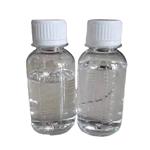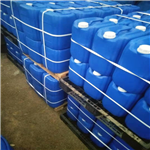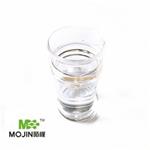colourless liquid with a pleasant odour
2-Bromobutane is utilized in the synthesis of non-nucleosides. It is used as a solvent as well as an intermediate in organic synthesis. It is an important raw material used to prepare Grignard reagent by reacting with magnesium. Further, it reacts with hydrocyanic acid to prepare sodium salt to get (+-)-sec-butyl cyanide. It is an important raw material used to prepare Grignard reagent by reacting with magnesium.
2-Bromobutane is used in the various organic synthesis, existing as a grignard reagent.
A colorless to pale-yellow colored liquid with a pleasant odor. Flash point 65°F. Insoluble in water and denser than water. Vapors are heavier than air and may be narcotic in high concentrations. Used to make other chemicals.
Highly flammable. Insoluble in water.
Halogenated aliphatic compounds, such as 2-Bromobutane , are moderately or very reactive. Reactivity generally decreases with increased degree of substitution of halogen for hydrogen atoms. Low molecular weight haloalkanes are highly flammable and can react with some metals to form dangerous products. Materials in this group are incompatible with strong oxidizing and reducing agents. Also, they are incompatible with many amines, nitrides, azo/diazo compounds, alkali metals, and epoxides. Gives toxic fumes of bromine when burned.
Narcotic in high concentration. Flammable,
dangerous fire risk.
Irritating to eyes, nose, throat, upper respiratory tract, and skin. Symptoms of exposure include burning sensation, coughing, wheezing, laryngitis, shortness of breath, headache, nausea, and vomiting.
Narcotic in high
concentrations. Questionable carcinogen
with experimental neoplastigenic data. See
also BROMIDES and CHLORINATED
HYDROCARBONS, ALIPHATIC.
Flammable liquid. Dangerous fire hazard
when exposed to heat or flame. When
heated to decomposition it emits toxic
fumes of Br-; can react with oxidzing
materials. To fight fire, use water, spray or
mist, foam, Co2, dry chemical.
Wash 2-bromobutane with conc HCl, water, 10% aqueous NaHSO3, and then water. Dry it with CaCl2, Na2SO4 or anhydrous K2CO3, and fractionally distil it through a 1m glass helices packed column. [Beilstein 1 IV 261.]



